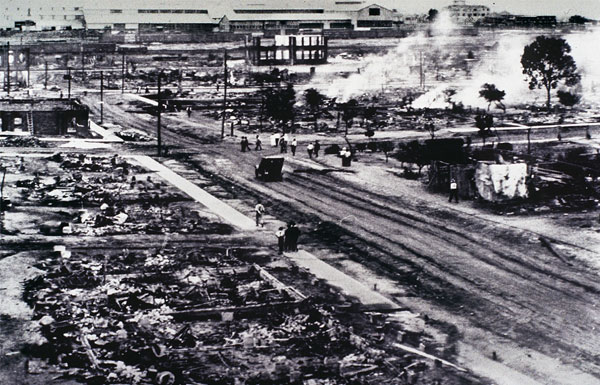When I was growing up, not many people knew about the Tulsa Race Massacre of 1921. Even today, the history is not well-known. We knew about race massacres across the nation but not in Tulsa. One of my older brothers loved history and told us, his younger siblings, about the history.
At one time, Ida B. Wells lived in Memphis, our home city. She was a Black journalist and civil rights activist who led anti-lynching crusades across the United States. My brother told me about her earlier call to action-Black people should leave the South and move to Tulsa.
According to the book, They Came Searching, by Eddie Faye Gates, from pre-statehood days to the present, people have come to Tulsa seeking a better way of life. Tulsa had mineral-rich lands and people of all races and nationalities. People from all over the United States went there for a better way of life. Native Americans were already there. Some were native to the area and others came as a result of a forced removal from other areas.
The oil men arrived in Oklahoma in the early 1900s. They came mostly from the eastern United States. They built their own banks, bridges, hotels, restaurants, and elegant mansions. On June 24, 1901, oil was discovered at Red Fork, four miles west of Tulsa. Some of America’s wealthiest men invested in the oil industry. Many people came in search of their Promised Lands.
Black people from the South felt life would be better for their families than it had been in the oppressive previous home states. Even though they still could not participate politically, socially, and economically, they did manage to carve out meaningful and productive lives in the “Promised Land.” This was in spite of rigid segregation and discrimination.
Historians report on the north side of the city was a segregated city within a city, called Greenwood. After Reconstruction, Black people owned businesses, stores, restaurants, homes, hotels, and other real estate. Greenwood was known as Black Tulsa or Little Africa.
In or around 1997, the author interviewed many residents of Tulsa. They were now in their 80s and 90s but had excellent memories of the worst race riot in Tulsa history. Their stories began with the Drexel Building located in downtown Tulsa. It was May 31, 1921 when nineteen year old Dick Rowland, a local bootblack (shoe shiner), went into the building to use the public restroom. This was the only public restroom for Black people. He had to take the elevator to the 4th floor.
Dick Rowland was a star football player at Booker T. Washington High School. He wore flashy diamonds and was also known as Diamond Dick. One of the older residents interviewed for the book said she knew him well. She knew his father owned a lot of property in North Tulsa, businesses, and shot gun houses. Dick didn’t have to work but chose to. She described him as a well-mannered young man.
The residents interviewed said he accidently bumped into seventeen year old Sarah Page, the elevator operator. The elevator was known to stop uneven floors so it was thought Dick accidently stepped on her foot or grabbed her arm. She screamed and hit him with her purse. After white people heard the scream, Dick was automatically suspected of sexual assault.
Word spread that Dick had assaulted Sarah. She did not make those charges. Some of the white residents did. The Chief of Police wanted a lynching. The night of May 31, 1921, Tulsa turned into a war zone. Greenwood was totally destroyed. Firebombs were dropped from airplanes. Firebombs were thrown into the homes and businesses of Black people. Some of the residents interviewed witnessed Black men, women, and children running down the street, fleeing from the horrors of the riot. The local Guard was called in but they sided with the white police. Over there days, mobs went on the rampage. They burned 35 city blocks. Homes and businesses were burned down. It is believed more than 300 people were killed. The newspapers reported approximately 37 people, but the residents reported more. Approximately 800 people were injured.
The men were rounded up and taken to various detention centers. The Greenwood area was now defenseless. The governor of Oklahoma sent in the Oklahoma National Guard. They took control but not before the mobs had completely destroyed Greenwood.
I’ll share more of the Tulsa Race Massacre next blog post.
Francie Mae. March 7, 2024
Reference
Gates, Eddie Faye. 1997. They Came Searching. How Black Sought the Promised Land in Tulsa. First Edition. Austin, Texas. Eakin Press.
At
